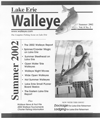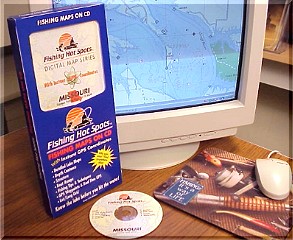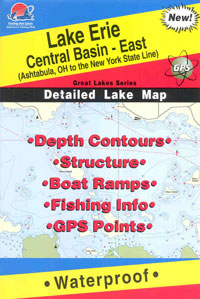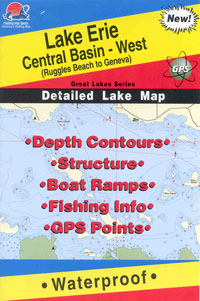Lake Erie water levels will continue a downward trend, according to the
January lake level forecast from the U.S. Army Corps of Engineers. The Corps
is calling for June water levels to be about 8-9 inches lower than June 2002
levels, and this is similar to levels observed in June 2001.
Roughly 90 percent of Lake Erie's water is provided by inflow from the
Detroit River, coming from the three upper Great Lakes. Therefore, adequate
winter precipitation in the upper Great Lakes basin is a key factor in
maintaining Lake Erie's water level.
According to the Corps' report, precipitation in the upper Great Lakes
Basin has been below average this winter. December precipitation for the
Lake Superior Basin was 67 percent lower than normal. In the Huron Michigan
Basin, the December precipitation rate was 57 percent lower than normal. In
the first three weeks of January, the Superior Basin had received only six
percent of normal precipitation and the Huron-Michigan Basin received only
nine percent of normal precipitation.
NOAA's Climate Prediction Center links the unfavorable precipitation
forecast to the now "mature" phase of the current EI Nino condition
dominating the tropical Pacific Ocean. The Center predicts that the
remainder of the northern winter will see drier-than average conditions over
the Ohio Valley and much of the Great Lakes. Much of the upper Great Lakes
region currently is classified as being in moderate to severe drought, with
drought conditions expected to intensify and expand at least through April
2003.
Unless precipitation increases substantially over the next two months -
which appears unlikely Lake Erie boaters will see low water levels and
increased boating hazards similar to those experienced in 2001.
Lake Erie boaters should remain aware of minimum water depths in their
boating areas and of underwater obstructions such as reefs and shoals. Also
remain cautious while boating on days with strong westerly and southwesterly
winds, which can temporarily lower the lake level further, making shallow
harbors difficult to re-enter.
Lake Erie’s Water Levels
Who's Responsible for Lake Erie's Water
Levels?
Anyone strolling on Lake Erie beaches during recent summers saw the
differences-beaches wider than normal, vacationers cautiously edging their
boats away from visible reefs, and docks resting several feet higher than
the vessels connected to them. Unlike the 1980s where shoreline property
owners battled erosion caused by high water levels, since 2000 the shipping
industry and recreational boaters have struggled to get their vessels
through low waters. What was a common Lake Erie water level of 574.1 feet in
July of 1997 dropped to a surprising 571.7 feet three years later. So who's
responsible? Solely Mother Nature.
Hydrologic Cycle
Like all the Great Lakes, Lake Erie's water is governed by a natural
circulation system in which water evaporates from the Lake, condenses to
form clouds and is returned to the earth's surface as precipitation. Water
enters the lake basin as precipitation directly over the lake's surface,
from groundwater, from runoff from the surrounding land, and from tributary
rivers and streams. Yet about 80 percent of Lake Erie's water comes from the
upper Great Lakes through the Detroit River (see above). Water evaporates
from the lake's surface when it comes in contact with dry air, forming water
vapor. The vapor stays as a gas, or it condenses to form fog and clouds.
When clouds form, precipitation falls, creating a continuous hydrologic
cycle.
Factors Affecting Lake Erie Water Levels
Lake levels are affected mainly by wind set-up and by changes in
precipitation, both locally and throughout the Great Lakes basin.
Fluctuating water levels in Lake Erie are natural occurrences and are
primarily a result of changes in the amount or rate of precipitation.
Because precipitation during the winter is likely to be stored as snow pack
or frozen ground water, Lake Erie experiences its lowest lake levels during
late winter. The combination of runoff from melting snow and ice (both
locally and from the upper Great Lakes) and increased local precipitation
tends to produce higher lake levels during the spring.
Wind set-up is caused by the persistent blowing of wind in a single
direction over a prolonged period of time. This produces a "piling up" of
water at the downwind side of the lake, triggering the level at the opposite
side to drop by the corresponding amount. This natural phenomenon can result
in extensive spring flooding at Buffalo, New York during a prolonged strong
west wind, or flooding in Port Clinton during an extended strong east wind.
When the winds cease, the water will eventually return to its original
level.
Types of Lake Level Fluctuations
Because Lake Erie is a highly dynamic system with
complex processes, water levels will naturally fluctuate due to seasonal,
short-term, and long-term changes. Seasonal fluctuations in water levels are
based mainly on changes in precipitation and runoff to Lake Erie. Although
precipitation is fairly constant throughout the year, the winter snow pack
does not contribute to the lake level rise until the spring thaw and related
runoff. Thus, the lake is always at its lowest level in the winter. The
biggest factor influencing Lake Erie water levels is the amount of snow and
ice melt received from the upper Great Lakes through the Detroit River. The
combination of snow melting and spring rains contribute to seasonally
increasing lake levels from early March through early August. Evaporation is
greatest in the fall and early winter when Lake Erie is relatively warm and
the air above the lake is cold and dry. It can also be very significant
during the long, hot cloudless periods of July and August.
Lake levels are also affected by day-to-day changes.
These short-term fluctuations are due to storms, wind, or ice jams and
usually last from a few hours to several days. Ice jams in the Niagara
River, for example, will decrease the amount of water flowing out of Lake
Erie, temporarily increasing the lake level. Sustained high winds (wind
set-up) can also cause short-term fluctuations, as described above.
Long-term fluctuation occurs over a period of years and
depends on how wet or dry and hot or cold the weather is around the entire
Great Lakes basin north of and including Lake Erie. Lake Erie experienced
extremely low levels in the late- 1920s, mid-1930s, and in the mid-1960s.
Extremely high levels were experienced in the early 1950s, and the mid
1970s, 1980s, and 1990s. During the last few years, precipitation levels
within the Great Lakes basin has been below average, which has contributed
significantly to our current low lake levels.
Source: FS-025 of the Ohio Sea Grant
"WALLEYE RUN" SET TO BEGIN ALONG
SANDUSKY AND MAUMEE RIVERS
One of Ohio’s most unique fishing opportunities is about to occur as the
2003 Maumee and Sandusky rivers’ walleye runs are about to begin, according
to the Ohio Department of Natural Resources (ODNR) Division of Wildlife.
Each spring, as water temperatures warm and days grow longer, a small
portion of Lake Erie’s walleye population make their way up the two
northwestern Ohio streams to spawn. And although they represent a small
portion of all Lake Erie walleyes, the run brings hundreds of thousands of
the tasty fish within casting distance of eager anglers.
During last year’s three to four-week run, approximately 40,000 walleyes
were caught in the Maumee and Sandusky rivers.
Walleye spawning normally occurs in these rivers anytime from mid-March
through mid-April, but frequently the peak activity occurs the first week of
April when the water temperatures range from 40 to 50 degrees. High,
fast-moving water also increases the number of walleye in the rivers,
especially if river temperatures are warmer than lake temperatures.
Most of the river walleyes taken this spring will measure 18-22 inches,
though some fish in both rivers will be much larger.
The best fishing areas in the Maumee River will be from Conant Street
Bridge in the City of Maumee upstream to the end of Jerome Road in Lucas
County. Sandusky River anglers will find greater success from Brady’s Island
to Roger Young Park in the City of Fremont.
Though most anglers wade these rivers while fishing for walleyes, some
choose to fish from boats. The ODNR advises boat anglers to always properly
wear a life jacket, take precautions against overloading their boat and
capsizing, be well dressed to avoid the onset of hypothermia, and be
prepared to handle an emergency should one occur.
Legal fishing hours from March 1 through May 1 are sunrise to sunset and
the daily walleye bag limit is four. Only fish that are hooked inside the
mouth may legally be taken and any snagged fish must be immediately
released.
Additional
fishing information
and
boating safety tips are available on the ODNR web
page at ohiodnr.com
MORE THAN 80,000 TROUT TO BE
RELEASED IN OHIO WATERS THIS SPRING
More than 80,000 rainbow trout measuring 10 to 13 inches will be released
in 40 Ohio waterways from March through May to enhance public fishing
opportunities. The daily catch limit for inland lakes is five trout per
angler.
Anglers age 16 and older must have an Ohio fishing license. Those anglers
age 66 and older may obtain a free fishing license where licenses are sold.
The season's new fishing license is now available and is required on March
1. The 2003 annual fishing license costs $15 and is valid through February
29, 2004. A one-day fishing license is available and may be purchased for $7
by residents or non-residents. The one-day license may also be redeemed for
credit toward purchase of an annual fishing license.
Additional information about spring trout releases is available by
calling a
Division of Wildlife
district office in Akron, Athens, Columbus,
Findlay, and Xenia, or by calling toll free 1-800-WILDLIFE.





